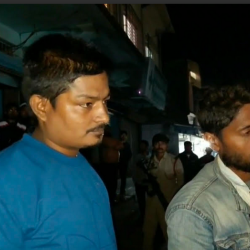Mosque is the place of worship for the adherents of Islam. There is an exception, as it is a location where people of all religions come to pay their respects, not just Muslims. It had been raining fiercely, and the bulk of the roads surrounding National Highway 27 were flooded, trapping our friends on the road for hours. It was Buddha Purnima, and we went in search of the location where it is believed that Buddha gained 'Nirvana.' We were fortunate to find this new location in addition to the well-known Hayagriva Madhav Mandir.
According to history, 'Poa Mecca' is the popular name for 'Maqam Mecca,' which means a place, position, or location for Mecca. It is situated on the 'Garurachal hills' in the town of Hajo, approximately 25 kilometres from Guwahati. The literal meaning of Poa Mecca is the quarter/sector of Mecca. Mecca is the holy place for Muslims all over the world. This Poa Mecca carries the granules of soil from Mecca, and people believe that their wishes are granted in this place.
It was our first time visiting a mosque. We were loaded with preconceived misconceptions acquired from the world. It was unclear whether women and people from other religion are permitted to enter the mosque. Eventually, we mustered all our strength and entered the Mosque; where we encountered a few people praying to ‘Allah’. They greeted us warmly and seated us on the carpet.
After paying our respects, we started searching if there are any literary sources to better understand the place. Observing this, the people at the mosque were courteous enough to open the gates for us, which led us to the Moghul Emperor Shahjahan’s stone inscription fixed on the outer wall of the rebuilt mosque. The inscription dates back to 1067 A.H. (Anno Hegirae; Hijri calendar predominantly used in Muslim countries) corresponding to 1656-1657 A.D. The old structure was built by Lutful’ah Shirazi an Iranian who was the contemporary to Prophet Mohammads’ time. The inscription tells the story of the commitment of Lutful’ah Shirazi, and the aid received from the Moghul prince Mohammad Shujauddin as well. According to the inscription, this Mosque was renovated in 1067 A.H. with the support of Hindu king Lakshmi Singha of Ahom dynasty, during the supremacy of Shahjahan. Shujauddin was one of the sons of Shahjahan and the inscribed stone renames the Poa Mecca’s location as Shuja’abad instead of calling it as Hajo. The inscribed granite is in Persian and translated to English for wider communication by the Archeological Survey of India.
The inscription states the message that a man with a true and kind heart can only be part of a mosque and admire Allah. If a man builds one mosque for Allah, Allah will build seven such Mosques for him in the future. An Islamic spiritual leader can practice Islamic Laws and respites people of their grievances at the Mosque. He is generally called Imam by people.
After understanding the historicity of the shrine through the inscribed stone we were asked to be seated. The Imam at the Mosque was generally curious about us regarding our native place, profession and the reason behind our visit. After learning about our profession as academicians in social sciences, he inquired about reputed nursing colleges in India for his daughter. His daughter was keen on gaining admission to one of the best nursing institutions in India. Since women from this community are not entitled to perform the same duties as that of an Imam, (the implication of this is that a woman cannot build a mosque and serve the society through Mosque), the Imams daughter wanted to serve the people through her nursing skills. However, as we learnt, female Imamat is perfectly permissible in women-only mosques, which are rare in the Indian context. The Imam’s daughter at the Mosque had inherited all the sympathetic qualities which Allah conveyed to the people who follow Islam. We felt honored and privileged at having visited such an ancient mosque and got an opportunity to read the Persian Inscription inside the Mosque on the day of Buddha Purnima. The eclectic message from our visit was that, be it ‘Buddha or Brahma or Al-Bari’ the ultimate meaning for life is obtained only by kindly serving others in society by being infinitely compassionate and merciful. Through our visit we were able to breakdown the misconceptions and returned with a positive note.

- 12384 reads









Add new comment